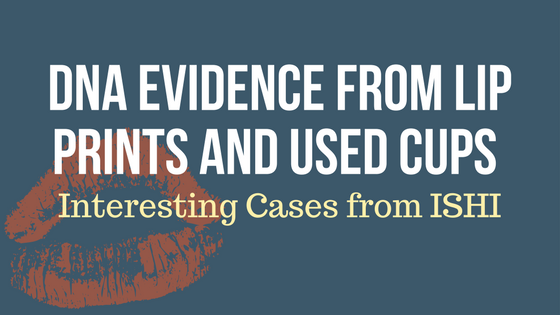Every year, hundreds of forensic analysts attend the International Symposium on Human Identification to learn about new advances in the field of DNA typing. The talks and posters are informative, and it is a great opportunity to network with DNA analysts from around the world. As the editor of Profiles in DNA, I am fortunate to attend the meeting to gather feedback about the publication and to get ideas for future content.
The information often is dense and the topics can get graphic, so midway through the conference many meeting attendees welcome a little lighter fare in the form of the Interesting Cases breakout session. In this session, forensic analysts and other scientists present some of their more unusual cases. In this series, I summarize a few of the more interesting (and less offensive) cases that have been presented in past years.
Terri Sundquist, Promega
The Windex® Case: Trace to Latents and then DNA
At the 18th International Symposium on Human Identification, Tony Tambasco presented the story of how the Mansfield Police Laboratory identified a suspect in the armed robbery of a convenience store. The story begins when police received a report of an armed robbery at a convenience store. At the scene, investigators collected a single swab and submitted it to the crime laboratory for processing. There were no signs of blood on the swab to give clues as to the sample type. What type of samples was it?
It turns out that the suspect, in his haste to leave the store, ran into the glass front door and left a lip print, which investigators swabbed. DNA analysts in the Mansfield Police Laboratory extracted DNA from the swab and amplified it to obtain a full STR profile. Analysts were able to match this STR profile to a profile in a Minnesota database, identifying the suspect. When faced with the evidence, the suspect pled guilty. In court, the DNA analyst used a recent Windex® advertisement, where an unsuspected person runs into a perfectly clear glass door, to demonstrate how the police obtained the DNA.
DNA Reconstructs the Events of a Crime Scene
Also at the 18th International Symposium on Human Identification, Gina Pineda of ReliaGene Technologies, Inc., presented another interesting case that further exemplifies the value of DNA evidence. In early 2007, there was a series of three carjackings with three sets of victims. The first carjacking involved an elderly woman driving a Nissan Sentra. Shortly after the carjacking, the carjackers crashed the Sentra into another car in a different city. Three men were seen fleeing the wreckage, leaving behind a bloody T-shirt. The carjackers then forced a female driver to surrender her car, a Chevy Malibu, which was involved in a drive-by shooting shortly thereafter. The car was found abandoned six hours later. Finally, a young couple driving a Honda Civic was carjacked and robbed. The car was later recovered, and police were able to identify one of the carjackers based on fingerprints found in the car. To strengthen their case, police collected swabs and items from the three cars for DNA testing, including various eating utensils and beverage containers, the bloody T-shirt from the Sentra and blood stains from all three cars. Once all of the DNA evidence was analyzed, investigators were able to piece together the events, including which of the three carjackers was driving each of the cars and which were passengers. They could also determine which suspect was hungry in which car and which was thirsty.
These are just a few examples of how powerful DNA analysis can be. Every year, additional interesting cases are presented at the International Symposium on Human Identification. Stay tuned future parts of this series with more examples of how DNA-typing is used to identify criminals. Be sure to register for this year’s meeting in Seattle to see which interesting cases will be presented next!
WOULD YOU LIKE TO SEE MORE ARTICLES LIKE THIS? SUBSCRIBE TO THE ISHI BLOG BELOW!


